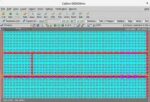Fabrizio Del Maffeo is the CEO and co-founder of Axelera AI, the Netherlands-based startup building game-changing, scalable hardware for AI at the edge. Axelera AI was incubated by the Bitfury Group, a globally recognized emerging technologies company, where Fabrizio previously served as Head of AI. In his role at Axelera AI, Fabriozo leads a world-class executive team, board of directors and advisors from top AI Fortune 500 companies.
Prior to joining Bitfury, Fabrizio was Vice President and Managing Director of AAEON Technology Europe, the AI and internet of things (IoT) computing company within the ASUS Group. During his time at AAEON, Fabrizio founded “UP Bridge the Gap,” a product line for professionals and innovators, now regarded as a leading reference solution in AI and IoT for Intel. In 2018, Fabrizio, alongside Intel, launched AAEON’s “AI in Production” program. He also previously served as the Country Manager for France and Sales Director for Northern, Southern and Eastern Europe at Advantech, the largest industrial IoT computing company. In this role, he also led the intelligent retail division. Fabrizio graduated with a master’s degree in telecommunication engineering from Milan Politecnico University.
Tell us about your company?
Axelera AI was founded in July 2021 with Evangelos Eleftheriou, emeritus IBM Fellow, myself and a core team from Bitfury AI, IMEC, researchers from IBM Zurich Lab, ETH Zurich, Google and Qualcomm.
Our mission is to rapidly provide access to advanced Edge AI-native hardware and software solutions for companies of all sizes across a range of market verticals and place AI in the hands of those who could not otherwise afford it. We do this by delivering faster, more efficient and easy-to-use inference acceleration while minimizing power and cost. To do this, our platform is purpose-built to support AI strategies across a wide-range of industries while seamlessly integrating with existing technologies.
With our team of brilliant engineers, developers and business experts, we are focused on building our solutions and ecosystem that together will drive the democratization of AI, enabling a green, fair and safe world.
In three years, Axelera AI has raised USD 120 million, built a world-class team of 190+ employees (including 60+ PhD’s with 40,000+ citations), launched its Metis™ AI Platform and is the largest AI semiconductor company in Europe.
The company is backed by major institutional investors, including Samsung Catalyst Fund, the European Innovation Council Fund, Innovation Industries Strategic Partnership Fund (backed by MN/Pension Fund for Metal and Technique), Invest-NL Deep-Tech Fund , along long-standing investors Verve Ventures, Innovation Industries, Fractionelera,the Italian sovereign fund CDP Venture Capital SGR, the Dutch Enterprise Agency (RVO), Bitfury, Federal Holding and Investment Company of Belgium (SFPIM), imec andimec.xpand.
What problems are you solving?
Current iterations of AI technology have leveraged more general purpose acceleration and have delivered expensive, power-hungry solutions that prove to be inefficient for many use cases. In the cloud, with access to water-cooling and large power supplies, this architecture suffices, but it is poorly suited for the edge.
At Axelera AI, we are revolutionizing the field of artificial intelligence by developing an industry-defining hardware and software platform for accelerating computer vision and generative AI on edge devices. Our platform, built using proprietary in-memory computing technology and RISC-V dataflow architecture, delivers industry-leading performance and usability at a fraction of the cost and energy consumption of current solutions.
Power consumption is a critical factor both on devices and in data centers. Axelera AI offers leading compute density with exceptional core efficiency which means systems can easily crunch data without draining power or running hot, with a typical use case requiring just a few watts.
One of the biggest challenges for Edge AI is optimizing neural networks to run efficiently when ported onto a mixed-precision accelerator solution. Our platform includes advanced quantization techniques and mapping tools that significantly reduce the inference computational load and increase energy efficiency. By creating integrated solutions that are powerful, cost effective and efficient, Axelera is bringing inference to the edge with accuracy.
What application areas are your strongest?
Axelera AI is primarily focused on providing powerful AI inference solutions for edge computing and high-performance applications. The first generation of AI processing unit, Metis, focuses on primarily on computer vision and some of the strongest application areas include:
- Security and Surveillance Axelera AI excels in real-time image and video processing for applications like campus management, safety, surveillance, access control
- Automotive: autonomous vehicles and infotainment
- Industrial automation: real-time high speed quality control, pick-and-place and general purpose robotics
- IoT Devices: Their technology is well-suited for IoT applications, enabling smart devices to process data locally with minimal latency.
- Smart Cities: AI-powered analytics for traffic management, public safety, and resource optimization can benefit from Axelera’s capabilities.
- Retail: Providing a frictionless experience for customers with personalized recommendations, queue management, fast and efficient checkouts, and smart mirrors.
- Healthcare: With nearly 10 million fewer health workers[1] than the world needs, bringing AI inference to the healthcare system will allow doctors to more quickly understand and diagnose patients.
We have been working on broadening our future product offerings from the edge to the enterprise servers to address the growing computing needs for generative AI, large language models and large multi-modal models.
What keeps your customers up at night?
Neural networks are getting bigger and they require more computations. Scaling performance using CPUs and GPUs are inefficient and extremely expensive. We are fully focused on tailoring our technology around the new emerging needs, efficiently offloading completely the AI acceleration from the CPU inside our AI processing unit.
We must also contend with the realities of the current chip market. These realities include the high cost of hardware, as well as ongoing shortages in the industry. A discrepancy in the demand and supply of chips, fueled by supply chain delays, the pandemic, natural disasters and labor market changes, is heavily impacting the global semiconductor space.
There is also the question of Moore’s Law and energy usage. Moore’s Law suggests that the number of transistors in an integrated circuit would double every two years, which played a driving role in modern tech development like computers. However, modern semiconductors are far more technologically complex and require significant energy to produce and progress. With our Metis AI Platform, we aim to overcome these challenges by delivering a product that packs the power of an entire AI server – all at a fraction of power consumption and cost of other solutions.
What does the competitive landscape look like and how do you differentiate?
Until now, AI systems and applications have relied on the computational performance of large, power hungry and expensive hardware. However, fully unlocking the potential of AI, especially at the Edge, requires a dramatic increase in FPS/$ which will enable complex AI applications to run on-device at the Edge. Running the industry-standard benchmark of ResNet, YoloSSD-Mobilenet families, the Metis PCI delivers high performance at a fraction of power consumption and price of today solutions. Furthermore, Metis excel in real application pipelines thanks to the possibility to run in parallel on different core multiple networks, delivering 5-10x higher throughput than existing solutions.
A major advantage of our SRAM-based D-IMC technology is that it has been implemented in standard CMOS technology. Our design uses proven, cost-effective and standard manufacturing processes, readily available in any silicon foundry which brings supply chain resiliency to system builders. Memory technologies are also a key driver for lower lithography nodes. So, Axelera AI will be able to easily scale performance as the semiconductor industry brings advanced lithography nodes into volume production.
We are also going beyond just the accelerator technology and chip development, building a fully interconnected ecosystem of support powered by a versatile and easy-to-use software stack: our VoyagerTM SDK.
What new features/technology are you working on?
The full production-ready Metis AI platform is now in production delivering high performance and preserving 99% of the original model’s precision, indistinguishable from GPU-based inference models, while offering 4-5 times throughput, energy efficiency and cost savings.
We have a complete product portfolio including standard form factors like an M.2 card to PCI-E cards capable of handling the most demanding vision applications. We have a complete roadmap that scales from single digit watt usage to enterprise grade server usage.
Our platform includes advanced quantization techniques that enable customers to run out of the box state of arts neural networks and mapping tools that significantly reduce AI computational load and increase energy efficiency,
Finally, our software tool chain allows customers to build up a complete application pipeline in a matter of minutes, simplifying the deployment of artificial intelligence in any device and opening up unprecedented opportunities for mass deployment of AI solutions.
Nowadays we are working on expanding the neural networks zoo to support Large Language Models on Metis. We are also in advanced design with the new AI processing unit, complementary to Metis and more focused on generative AI workload. The product line will be announced later next year.
How do customers normally engage with your company?
Whether you are a computer vision system developer or integrator, software vendor or OEM, our AI acceleration hardware has been built to meet your needs. Delivering leading AI acceleration hardware in a range of industry accepted form factors supported by our easy-to-use software stack, Metis simplifies development, integration and deployment of AI inference acceleration.
Valuation kits are available in six variations, each designed for industry-defining AI vision inference. The kits are equipped with the Metis AIPU integrated in an AI Acceleration card, and the Voyager Software Development Kit, allowing users to evaluation performance and vision systems using popular AI inference networks such as YOLOv7.
Customers use the SDK to bring their applications into the Metis AI platform and run it on Axelera’s powerful Metis AI Processing Unit (AIPU), whether the application is developed using proprietary or standard industry models. The VoyagerTM SDK offers end-to-end integration and is API-compatible with de-facto industry standards, unleashing the potential of the Metis AIPU, delivering high-performance AI that can be deployed quickly and easily.
The VoyagerTM SDK comes with a Model Zoo, a catalog of state-of-the-art AI models and turnkey pipelines for real-world use cases including image classification, object detection, segmentation, keypoint detection, face recognition and other Computer Vision tasks. Importantly, developers can easily modify any of the offered models to work with their own datasets or make them fit better to their application requirements.
We are working on creating a frictionless experience for our customers who soon will be able to buy online our products and get supported by an online developer community.
[1] World Health organization: Health workforce
Also Read:
CEO Interview with Dinesh Bettadapur of Irresistible Materials









